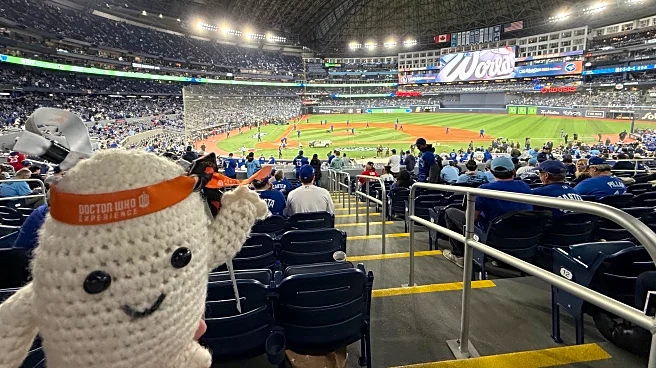What's Happening?
The Los Angeles Dodgers are set to start Shohei Ohtani on the mound for Game 7 of the World Series against the Toronto Blue Jays. This decision is influenced by a unique MLB rule, Rule 5.11(b), which allows
a starting pitcher who is also in the batting lineup to continue hitting even after being removed from the mound. This rule is particularly relevant for Ohtani, who is known for his dual role as a pitcher and hitter. Dodgers manager Dave Roberts has opted to start Ohtani to ensure his bat remains in the game, regardless of how long he pitches. Ohtani, a three-time MVP, has not played in the field often, which adds complexity to the decision. The game will be broadcast exclusively on FOX at 8 p.m. ET.
Why It's Important?
This decision highlights the strategic considerations teams must navigate due to MLB's rules regarding dual-role players like Shohei Ohtani. The ability to keep Ohtani's bat in the lineup is crucial for the Dodgers, given his offensive prowess. This rule could influence how teams utilize players with similar skill sets in the future, potentially affecting roster decisions and game strategies. The outcome of this game could have significant implications for the Dodgers, as they aim to secure a World Series victory. Additionally, the rule underscores MLB's efforts to accommodate unique talents, which could lead to further rule adaptations.
What's Next?
The Dodgers' decision to start Ohtani on the mound will be closely watched, as it could set a precedent for how teams manage dual-role players in high-stakes games. Depending on Ohtani's performance, MLB might consider revisiting or expanding rules related to player roles. The outcome of Game 7 will also determine the World Series champion, impacting team dynamics and player legacies. Fans and analysts will be keen to see how Ohtani's dual capabilities influence the game's outcome and whether this strategy will be adopted by other teams in future seasons.
Beyond the Headlines
The use of Shohei Ohtani in this manner raises questions about the evolving nature of baseball and the increasing importance of versatile players. It challenges traditional roles and could inspire young athletes to develop multiple skills, potentially changing the landscape of player development. The rule also reflects MLB's willingness to adapt to the unique talents of players, which could lead to more inclusive and dynamic gameplay.













